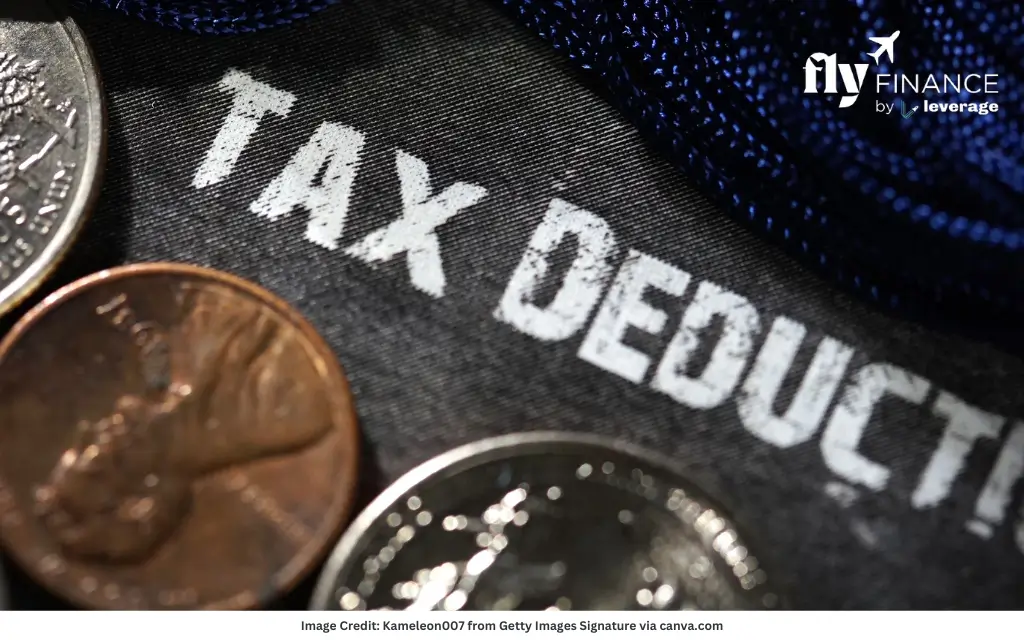Tax Deducted at Source (TDS) is a crucial component of India’s tax system, affecting various financial transactions, including those at banks. Understanding what TDS in bank means helps individuals manage their finances effectively and stay compliant with tax regulations.
This blog explores the concept of TDS in banks, how it works, rates, exemptions, ways to avoid Tax Deducted at Source and how to check and claim TDS refunds.
This Blog Includes:
What Is TDS in Banking and Its Role?
Tax Deducted at Source (TDS) is a mechanism where a portion of tax is deducted by the payer before making certain payments, such as interest on bank deposits. TDS in banking ensures that taxes are collected at the source of income, reducing tax evasion and ensuring a steady revenue flow for the government.
Knowing what TDS in bank entails empowers individuals to plan their investments and tax obligations better.
- Definition: Tax Deducted at Source is a percentage of income deducted at the source by the payer (e.g., a bank) and remitted to the government.
- Purpose: It facilitates advance tax collection and ensures compliance with the Income Tax Act, 1961.
- Applicability in Banks: TDS primarily applies to interest earned on fixed deposits, recurring deposits, and savings bank accounts for students and individuals.
Also Read: How to Make a Demand Draft in a Bank: A Step-by-Step Guide
How TDS Works in Banks
TDS in banks operates under specific provisions of the Income Tax Act, particularly Section 194A, which governs interest payments other than those on securities. Banks deduct TDS when the interest earned exceeds a predefined threshold in a financial year.
Let’s understand the mechanics of how banks implement Tax Deducted at Source and what it means for account holders.
TDS on Fixed Deposits (FDs)
Fixed deposits are a popular investment option, but the interest earned is subject to TDS. Banks deduct TDS if the interest exceeds the threshold limit, ensuring that a portion of the tax is paid upfront.
- Threshold Limit: For FY 2025-26, TDS applies if interest exceeds INR 50,000 for non-senior citizens and INR 50,000 for elderly citizens (increased from INR 40,000 for non-senior citizens in Budget 2025).
- Rate: 10% if PAN is provided; 20% if PAN is not linked.
- Example: If you earn INR 60,000 interest on an FD and provide your PAN, the bank deducts INR 6,000 (10%) as TDS.
Tax Deducted at Source on Savings Accounts
Interest earned on savings accounts is also taxable, though the rules differ slightly. Understanding what TDS in bank means for savings accounts helps in managing smaller, regular earnings.
- Threshold Limit: Interest up to INR 10,000 is exempt under Section 80TTA for persons below 60 years. Beyond this, TDS may apply if total interest exceeds INR 50,000.
- Rate: 10% if PAN is provided; 20% if not.
- Note: Senior citizens can claim a deduction up to INR 50,000 under Section 80TTB, reducing TDS liability.
Tax Deducted at Source on Cash Withdrawals
Section 194N introduced TDS on large cash withdrawals to discourage cash transactions. This applies to withdrawals from bank accounts, including savings or current accounts.
- Threshold Limit:
- INR 1 crore if ITR filed for any of the last three years.
- INR 20 lakh if no ITR filed for the last three years.
- Rate: 2% on amounts exceeding the threshold.
- Exemptions: Certain entities like banking correspondents or cooperative banks are exempt.
Also Read: Savings Account Cash Withdrawal Limit
Exemptions and Ways to Avoid TDS
Not all interest income or transactions attract Tax Deducted at Source. Specific exemptions and forms allow individuals to avoid TDS if their income is under the taxable limit slab. Let’s outline how to minimize or eliminate TDS deductions.
Submitting Form 15G and Form 15H
Forms 15G and 15H are declarations that help individuals avoid TDS on interest earnings if their overall income falls below the minimum taxable limit. Let’s understand the uses of these forms in detail.
- Form 15G: For persons below 60 years with total income below INR 2.5 lakh.
- Form 15H: For elderly citizens (60 years and above) with total income below INR 3 lakh (INR 5 lakh for super senior citizens).
- Process: Submit these forms i.e., Form 15G or Form 15H to the bank at the start of the financial year to prevent TDS deduction.
- Eligibility: Your tax liability must be nil, and interest income should not exceed the exemption limit.
Other Exemptions
Certain scenarios or entities are exempt from Tax Deducted at Source, reducing the tax burden.
- Low Interest Income: No TDS if interest is below INR 50,000 for FDs or INR 10,000 for savings accounts (under 80TTA).
- Exempt Entities: Payments to government bodies, RBI, or specific institutions are TDS-free.
- Section 197: Apply for a lower or nil TDS certificate if your tax liability is minimal.
Also Read: What is OD in Bank?: How It Works, Features & More
How to Check and Claim TDS Refunds
If TDS is deducted but your total income is under the taxable limit, you can claim a refund by filing an Income Tax Return (ITR). Now, let’s understand how to track TDS and claim refunds.
How to Check TDS Details
Form 26AS provides a consolidated view of Tax Deducted at Source deducted and deposited against your PAN.
- Steps to Access:
- Log in to the Income Tax e-filing portal (www.incometax.gov.in).
- Navigate to “My Account” and select “View Form 26AS.”
- Download the PDF using your date of birth as the password (e.g., 05031990 for March 5, 1990).
- Details Included: TDS on interest, cash withdrawals, and other transactions linked to your PAN.
How to Claim TDS Refund
Excess TDS can be refunded by filing an ITR, ensuring accurate reporting of income and deductions.
- Process:
- Timeline: Refunds are typically processed within 6 months.
- Example: If a bank deducts INR 5,000 TDS on FD interest but your taxable income is zero, you can claim the full INR 5,000 as a refund.
Due Dates and Compliance for TDS
Banks and individuals must adhere to strict timelines for TDS deduction, deposition, and return filing to avoid fines or penalties. This section highlights the critical deadlines and compliance requirements.
- TDS Deposition: By the 7th of the next month (e.g., Tax Deducted at Source deducted in April must be deposited by May 7). For March, the deadline is April 30.
- TDS Return Filing: Quarterly returns (Form 26Q for interest) due on July 31, October 31, January 31, and May 31.
- TDS Certificate Issuance: Banks issue Form 16A within 15 days of the return filing due date.
- Penalties:
- Late deduction: 1% interest per month.
- Late deposition: 1.5% interest per month.
- Late return filing: INR 200 per day under Section 234E.
Practical Tips to Manage TDS in Banks
Managing Tax Deducted at Source effectively requires proactive steps to ensure compliance and maximize returns. These practical tips help individuals navigate what TDS in bank means for their finances.
- Link PAN with Bank Accounts: Avoid higher TDS rates (20%) by ensuring your PAN is updated.
- Submit Forms Timely: File Form 15G/15H at the beginning of the financial year to prevent unnecessary deductions.
- Monitor Form 26AS: Regularly check TDS details to ensure accurate deductions and deposits.
- Plan Investments: Spread FDs across multiple banks to keep interest below the INR 50,000 threshold.
- File ITR Annually: Claim refunds for excess TDS and stay compliant with tax laws.
Also Read: What is ECS in Banking?
Understanding what TDS in bank means is essential for anyone earning interest or making large cash withdrawals. By knowing the rules, exemptions, and compliance requirements, you can minimize tax deductions and ensure smooth financial planning.
FAQs on TDS in Banking
TDS (Tax Deducted at Source) in banks is a tax deducted from income like interest on fixed deposits or savings accounts before it is credited to your account. It ensures tax collection at the source under the Income Tax Act, 1961, reducing tax evasion.
Banks deduct TDS on fixed deposits if the interest earned exceeds INR 50,000 in a financial year (FY 2025-26) for both non-senior and senior citizens, at a rate of 10% if PAN is provided, or 20% if not.
Yes, TDS applies to savings account interest if it exceeds INR 50,000 in a financial year, after accounting for exemptions like INR 10,000 under Section 80TTA for non-senior citizens or INR 50,000 under Section 80TTB for elderly citizens.
You can avoid TDS by submitting Form 15G (for persons below 60 with income below INR 2.5 lakh) or Form 15H (for senior citizens with income below INR 3 lakh) to your bank, provided your total income is under the taxable limit.
Under Section 194N, TDS at 2% is deducted on cash withdrawals exceeding INR 1 crore (if ITR filed for any of the last three years) or INR 20 lakh (if no ITR filed), applicable to savings or current accounts.
You can check Tax Deducted at Source details in Form 26AS, available on the Income Tax e-filing portal (www.incometax.gov.in). It lists all TDS deductions linked to your PAN, including interest and cash withdrawals.
Yes, if your total income is under the taxable limit, you can claim a TDS refund by filing an Income Tax Return (ITR) online, ensuring accurate reporting of income and Tax Deducted at Source details.
If you don’t provide your PAN, the bank deducts TDS at a higher rate of 20% on interest earnings from fixed deposits or savings accounts, instead of the standard 10%.
Banks must deposit TDS by the 7th of the next month (April 30 for March), file quarterly Tax Deducted at Source returns by July 31, October 31, January 31, and May 31, and issue Form 16A within 15 days of the return filing date.
To reduce TDS, spread your fixed deposits across multiple banks to keep interest below INR 50,000 per bank, submit Form 15G/15H if eligible, or apply for a lower/nil Tax Deducted at Source certificate under Section 197.
To learn more about bank accounts for students, the best education loans, forex, banking experience for global students, or international money transfers, reach out to our experts at 1800572126 to help ease your experience with studying abroad.
Follow Us on Social Media





























